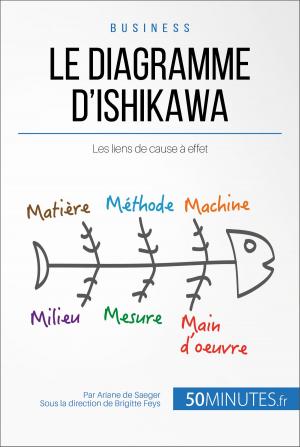Seven Basic Quality Tools
Business & Finance, Management & Leadership, Decision Making & Problem Solving| Author: | ASQ Quality Press | ISBN: | 9780873898157 |
| Publisher: | ASQ Quality Press | Publication: | December 15, 2009 |
| Imprint: | Language: | English |
| Author: | ASQ Quality Press |
| ISBN: | 9780873898157 |
| Publisher: | ASQ Quality Press |
| Publication: | December 15, 2009 |
| Imprint: | |
| Language: | English |
"The First Seven."
"The Basic Seven."
Quality pros have many names for these seven basic tools of quality, first emphasized by Kaoru Ishikawa, a professor of engineering at Tokyo University and the father of “quality circles.”
Start your quality journey by mastering these tools, and you'll have a name for them, too: "indispensable."
Included in this straightforward, how-to book is a description, when to use, procedure, and example for these seven indispensable quality tools:
1. Cause-and-effect diagram (also called Ishikawa or fishbone chart): Identifies many possible causes for an effect or problem and sorts ideas into useful categories.
2. Check sheet: A structured, prepared form for collecting and analyzing data; a generic tool that can be adapted for a wide variety of purposes.
3. Control charts: Graphs used to study how a process changes over time.
4. Histogram: The most commonly used graph for showing frequency distributions, or how often each different value in a set of data occurs.
5. Pareto chart: Shows on a bar graph which factors are more significant.
6. Scatter diagram: Graphs pairs of numerical data, one variable on each axis, to look for a relationship.
7. Stratification: A technique that separates data gathered from a variety of sources so that patterns can be seen (some lists replace "stratification" with "flowchart" or "run chart").
"The First Seven."
"The Basic Seven."
Quality pros have many names for these seven basic tools of quality, first emphasized by Kaoru Ishikawa, a professor of engineering at Tokyo University and the father of “quality circles.”
Start your quality journey by mastering these tools, and you'll have a name for them, too: "indispensable."
Included in this straightforward, how-to book is a description, when to use, procedure, and example for these seven indispensable quality tools:
1. Cause-and-effect diagram (also called Ishikawa or fishbone chart): Identifies many possible causes for an effect or problem and sorts ideas into useful categories.
2. Check sheet: A structured, prepared form for collecting and analyzing data; a generic tool that can be adapted for a wide variety of purposes.
3. Control charts: Graphs used to study how a process changes over time.
4. Histogram: The most commonly used graph for showing frequency distributions, or how often each different value in a set of data occurs.
5. Pareto chart: Shows on a bar graph which factors are more significant.
6. Scatter diagram: Graphs pairs of numerical data, one variable on each axis, to look for a relationship.
7. Stratification: A technique that separates data gathered from a variety of sources so that patterns can be seen (some lists replace "stratification" with "flowchart" or "run chart").















